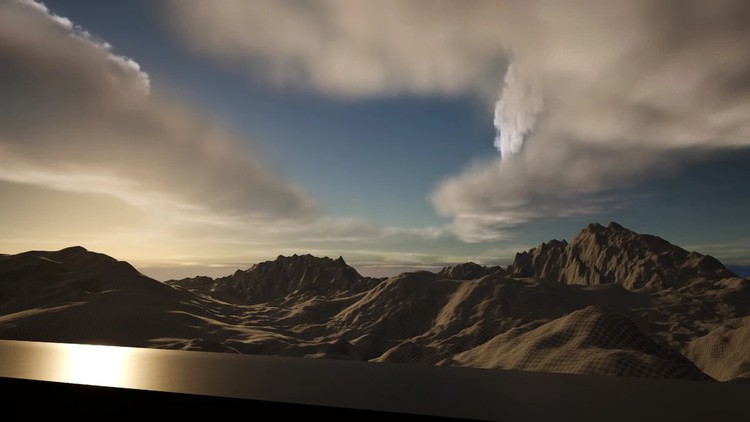
Improve your visualization project by learning how to add terrains or landscapes to your scenes!
What you will learn
Learn techniques you can use to build landscapes and terrains
Learn the concepts underpinning terrain objects
How landscapes can aid our visualization
Learn ways you can set up the terrain transformations and understand sections and components as they relate to architectural visualizations
Twinmotion and how to use it
Recommendations for a new far-distance terrain
How to use Landscape Edit Layers
How to import terrain height data
How to use the Sculpt tool
Learn about paint layers, map tiling, and enhancing your visualization with landscape materials
Description
- Intermediate
Welcome to the Unreal terrain for ArchViz course. My name is Joel Bradley, and we’re going to be discussing how can the addition of terrains or landscapes to an Unreal level help improve a visualization project. Now, how would you answer that question? Well, some fairly common answers from individuals might include, it helps make the project look more realistic, it helps give context to the building and some others might take a more technical approach to the aesthetics in question and say that it can help the designers and builders do their work in a way that compliments the surrounding environment. Being able to quickly make changes to the surrounding landscape means that adjustments to building layouts can still be done whilst in the planning stage of a project. And of course, having a landscape in the scene can completely change the options that we might choose to add so far as interaction with the building is concerned when giving the client the ability to walk around inside a level, for example. All of those and other reasons besides, maybe part of why we want to add landscapes to our real time work projects. And so, we are looking into how to accomplish that via this training course. How we craft set-up and then also present landscapes in our levels can affect so many aspects of a project that it is essential to give clear thought to them, if we want to aid rather than hinder our visualizations. In this particular course, though, we won’t be going through anything like a step-by-step tutorial as this would mean that well, we only learn to recreate what I have in my scenes. The aim, however, is to create a series of videos here that asks questions, explore possibilities, and then see how the tools available to us in Unreal can help answer those questions in a way that can be applied to any projects that we may be called to work on in the future. And to help meet those ends, we’ll also be discussing some of the essential concepts that need to be kept in mind when using certain terrain tools inside Unreal. With those discussions, hopefully allowing us to both ask and answer important questions as we craft our terrains. Questions such as, how are terrains created inside Unreal, when might we not want to create them by hand, as it were, how do we manage and craft terrains that work for our project and what principles do we need to think about when painting our texturing our landscapes. Now you will see me regularly hiding unused terrains as we progress through the videos here, simply because, well, Unreal doesn’t save the visibility on-off state of objects within the save file. And so you might want to follow suit and hide all of the terrains found inside the level, except the one that we are working on, which I will mention. Now I will do this even though I won’t be explicitly telling you to do so at the start of every single video. Right Then, let’s get into the course and take a look at some ways in which we might use Unreal terrains in our ArchViz projects.